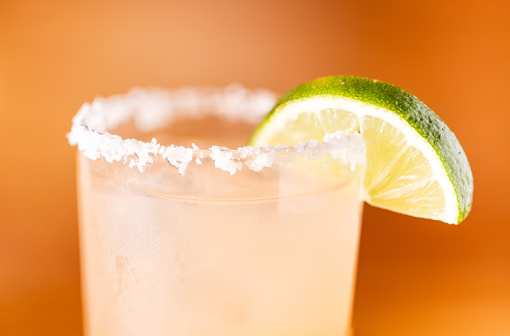About us:
The Arab Historic Village contains seven historic buildings commemorating the area's original settlers and the town's establishment in 1892. Laid out in the City Park, the Village includes a school, a church and a former country store, all containing period artifacts. One of the structures, the Elvin Light Museum contains exhibits of furnishings from the town's original businesses. The Village is located a few blocks east of the Arab Library.
The Elvin Light Museum:
Elvin Light’s dream to develop a museum led to a lifetime of collecting local artifacts from the years he knew best. With donations and help from volunteers, his dream became a reality in 1998 in the form of the Elvin Light Museum. It offers many interesting insights into Arab’s past. The museum contains displays depicting various occupations and household areas with furnishings from original businesses or typical furnishings for the times. A large number of tools and other items are displayed throughout the Museum.
The Hunt School:
This two-room school for grades 1-6, named for Jesse and Sarah Hunt, was built in the Strawberry Community in 1935, and donated to the Historical Society in 1990 by Bobby Miller. The Society moved it to Arab City Park and restored it as a Centennial project. It became the first installment of Arab’s Historic Village. Visitors get a real taste of early education in the area before cafeterias, air-conditioning and running water.
Smith's Country Store:
Rice Church, formerly known as Liberty Church was built around 1911 as a Primitive Baptist Church in the Rice Community. It was donated to the Arab Historical Society in 1993 by the Pleasant Ridge Baptist Church and moved to the Historic Village at Arab City Park. Restored by Society members and volunteers, it officially opened in October, 1995 with a Sacred Harp Singing.Mrs. Shirley Gullion is a regular performer there, giving visitors some Southern Gospel, beautiful piano, and soul-stirring dulcimer. Children appreciate her renditions of the folk songs they have long loved.
Ruth Homemakers Clubhouse:
The Clubhouse was built in the late 1930’s by the men of the Ruth community who decided to each donate a tree and provide a meeting place for their ladies to hold Home Demonstration club meetings. In addition to holding meetings in their building, activities such as quilting, knitting, mattress making and canning took place. The building was donated to the Arab Historical Society and opened on September 8, 2001.
The Boyd Farmhouse:
The Boyd Farmhouse was built by Matthew Allen Boyd and wife Eletter Kennedy Boyd who came to Brindley Mountain and homesteaded 160 acres of land on a ridge that would later become part of the town of Arab. Their youngest daughter, “Miss Lola” (Boyd ) as she was fondly called, was a retired school teacher who lived all her 99 years in the house. She willed it to the citizens of Arab to be received and restored by the Historical Society. This house has the traditional L-shape, as did many homes of the period. It contains a hall, 4 rooms and 2 porches, sixteen-foot ceilings, and an original front door with sidelights. The house is decorated in early 40’s style, after electricity, but before many other modern conveniences. As you enter the large, dine-in kitchen, you can almost smell cornbread baking in the old wooden cook stove.
Westbrook Well and Smoke House:
Lelton and Faye Westbrook had plans for several years to have his father’s combination well/smoke house moved to the Historic Village as a part of the Boyd Homestead. Before the move could take place, the old house that had so faithfully served the Westbrook family fell into disrepair. It was decided that a new well and smokehouse would be constructed, just like the old one, with Lelton and Faye donating all usable parts of the old one, as well as many new ones. Several other Historical Society members donated time and money and now the Westbrook Well / Smoke House becomes the first installment of out-buildings to accompany the Boyd Farmhouse in the Homestead.
The Grist Mill and Blacksmith Shop:
After Hunt School was moved to the Arab City Park and restored, it became the dream of the Arab Historical Society to create a rural community within the Park area. With the City of Arab in agreement, plans began to form for a historic village. That village would not be complete without a grist mill and blacksmith shop since when a family would move into an area, part of “settling in” included a search for a miller and a blacksmith. Thus those two shops would be built.
Area citizens donated the old lumber used to give those shops authenticity. Mr. Jerrel Smalley donated his grist mill equipment. A visit today yields the smell of perfectly ground cornmeal and, at Christmas, children are delighted to receive packets of “reindeer food” from the old Grist Mill! A side shed to the Grist Mill houses the “Cobb” family’s wagon. Mr. Craton Cobb made a special trip to Albertville, Alabama in 1930 to buy the John Deere wagon from Thompson Furniture and Hardware Company. Cost, $140. Because of tender care, it served his family well through work and play for many years, after which they donated it to the Historical Society. Area citizens also donated the equipment for the Blacksmith Shop. The Village has been blessed with trained blacksmiths to fire up the pit and actually produce what would have been a tool of necessity, or an occasional pair of “reindeer shoes”!





